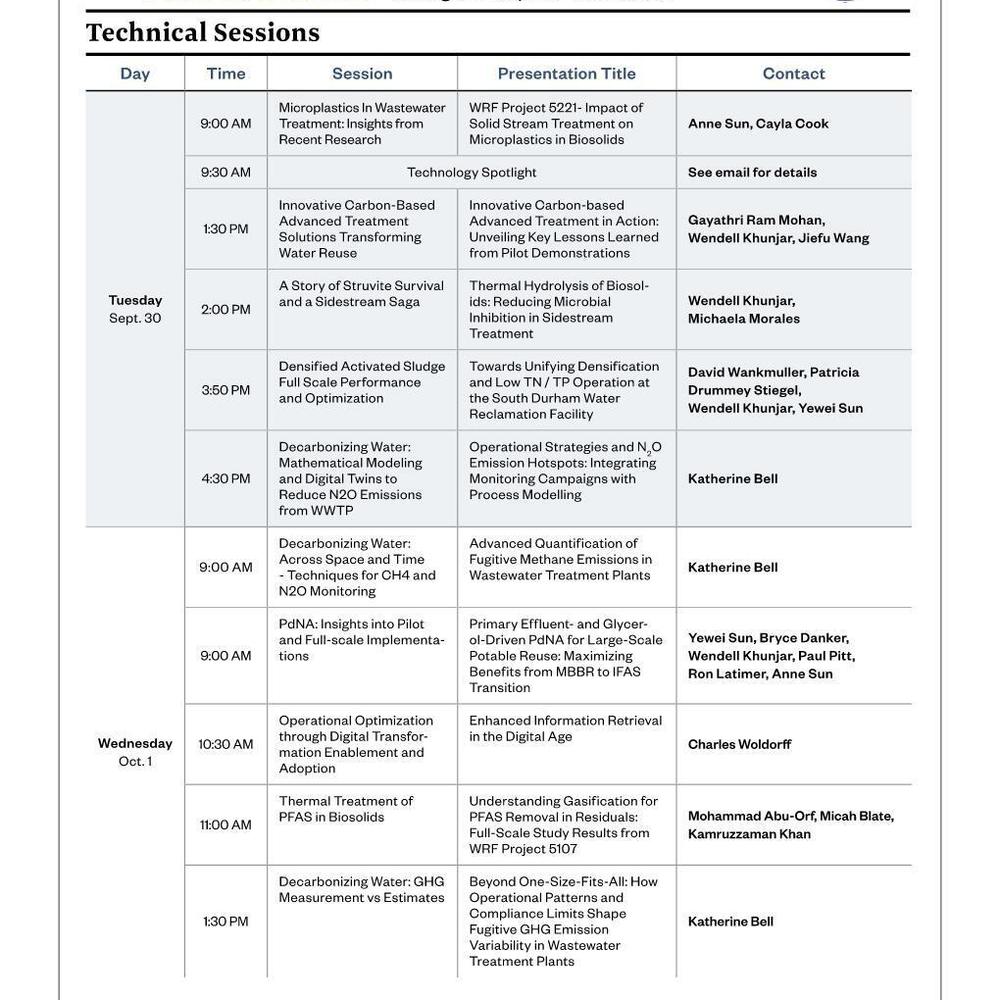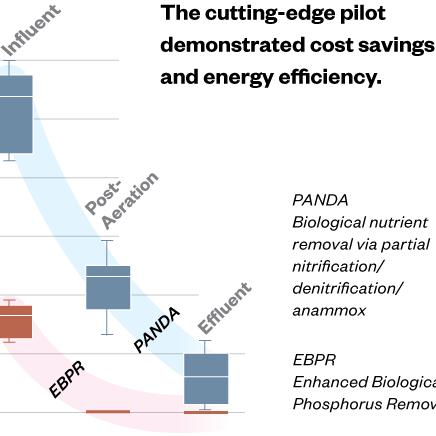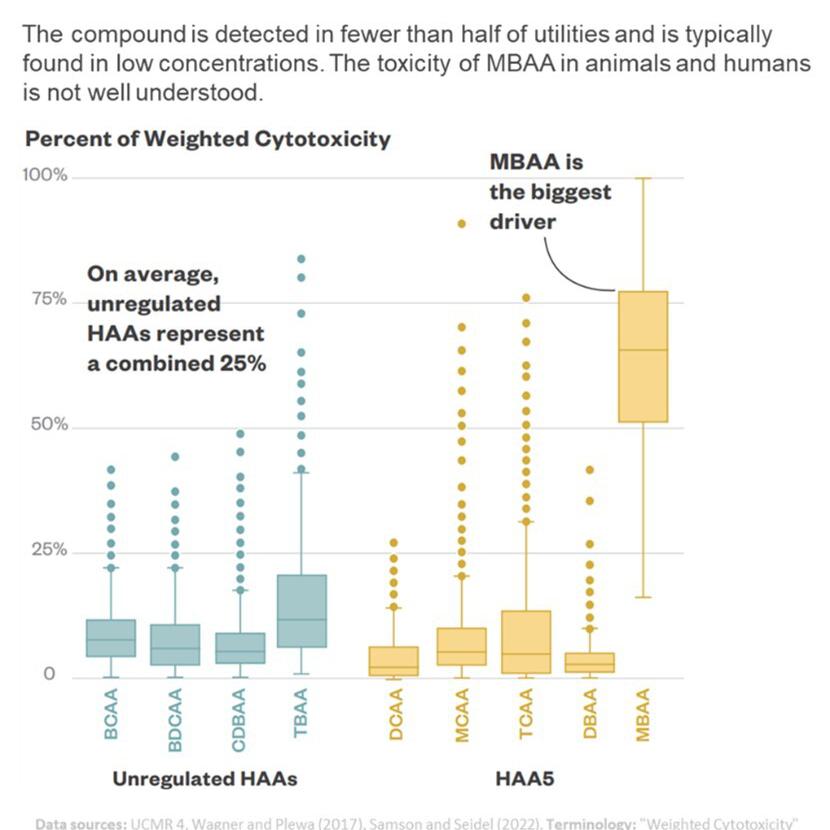Treatment Strategies for Meeting Ultra-low Total Phosphorus Limits: Performance and Pilots
Last Modified Aug 01, 2022
Introduction
Water Resource Recovery Facilities (WRRFs) are under increasing regulatory pressure to reduce effluent total phosphorus (TP) to very low levels. Many facilities are now required to remove TP below 0.1 mg/L, either on a mass load allocation or concentration basis. An increasing number of facilities are faced with even more stringent effluent limits, with some regulatory agencies proposing effluent TP limits of 0.01 mg/L or less. Conventional technologies (biological and/or chemical phosphorus removal with tertiary settling or filtration) can typically reliably remove TP to between 0.10 and 0.15 mg/L. In order to reliably achieve effluent TP concentrations below 0.1 mg/L, two-stage tertiary treatment (i.e. flocculation/settling followed by filtration or dual-filtration) or tertiary membrane processes have been implemented. In addition, there are several emerging ultra-low phosphorus removal technologies such as reactive filtration, ion exchange and electrocoagulation.
Methodology
Five WRRFs routinely reducing effluent TP concentrations below 0.1 mg/L were selected for this study. Each of the facilities has multi-point chemical addition for phosphorus removal, and three of the five facilities are configured to provide for biological phosphorus removal. Plants A and C have anaerobic digestion followed by dewatering whereas the other facilities do not have anaerobic digestion. Historical data was evaluated and additional wastewater sampling was performed in order to characterize influent, solids recycle and operational impacts on plant performance. Chemical (metal salt) consumption was also documented.
Additionally, pilot testing of three emerging ultra-low phosphorus technologies (ion exchange, electrocoagulation and ferrate addition) was performed at a 208 ML/day (55 mgd) WWTP to determine technology alternatives to nanofiltration (NF) or reverse osmosis (RO) for meeting an effluent TP concentration limit of 0.01 mg/L (single sample). The pilot study results were compared to the full-scale performance of the five reference WRRFs.
Related Topics:

Results
Plant A reduces effluent TP concentrations to less than 0.3 mg/L through the secondary process, and tertiary treatment reduces effluent TP to an average of approximately 0.05 mg/L. Plant B secondary effluent TP averages 0.13 mg/L, and is reduced to an average of 0.08 mg/L through deep bed filters.
Plant C reduces average secondary effluent TP below 0.05 mg/L through a five-stage BNR membrane bioreactor (MBR) process. Membrane process effluents typically remove almost all solids including particulate phosphorus, and provide improved ability to meet low effluent TP concentrations compared to traditional settling and filtration technologies.
Plant D reduces secondary effluent TP below 0.4 mg/L through multi-point chemical addition, with further reduction through tertiary settling basins and subsequent filtration. Plant E utilizes dissolved air flotation (DAF) for primary clarification, and metal salt can be added to remove phosphorus through the primary treatment process as well as at downstream locations. Plant E effluent TP concentrations average 0.06 mg/L after tertiary treatment through ballasted flocculation.
Effluent TP concentration percentile plots for each plant are presented in Figure 1. The median effluent TP concentration ranged between 0.04 and 0.08 mg/L. The 95th-percentile effluent TP concentration ranged from 0.07 to 0.15 mg/L. Plants A and C, which both use membrane processes, had a very similar effluent TP concentration distribution and the lowest effluent TP.
Plant C has the highest estimated chemical costs per unit of flow treated. This facility has an MBR, and recycle of dissolved oxygen from the membrane tanks to anoxic/anaerobic zones can reduce the efficiency of biological phosphorus removal (BPR), increasing chemical requirements. Plant C also has anaerobic digestion, and phosphate released during digestion is returned in the dewatering streams. Plants B and D, which do not have dedicated anaerobic zones and therefore have limited biological phosphorus removal capacity, have the lowest estimated chemical costs per unit flow treated. Neither of these facilities has anaerobic digestion, and solids recycle streams do not contribute substantial phosphorus load back to the liquid stream process.
The pilot testing demonstrated that electro-coagulation, ion exchange and ferrate addition could each remove effluent TP concentrations below 0.01 mg/L. N-Nitrosodimethylamine (NDMA) generation was observed during the ferrate addition testing. The use of sodium hypochlorite in the synthesis of ferrate as well as its strong oxidation state may explain the increase in NDMA during pilot testing.
Conclusions
The full-scale WRRF operating data indicates that the incorporation of membrane processes may allow more consistent attainment of effluent TP concentrations below 0.08 mg/L compared to more conventional settling and filtration technologies. Full-scale performance demonstrates that incorporating membrane processes can reduce average effluent TP concentrations below 0.05 mg/L on an average basis. Facilities that include biological phosphorus removal and anaerobic digestion can achieve low effluent TP concentrations but may have greater chemical feed requirements than those plants only practicing chemical phosphorus removal through multi-point metal salt addition. Sidestream phosphorus removal (i.e. struvite precipitation and harvesting) may reduce the cost of compliance with strict effluent TP limits at facilities employing biological phosphorus removal and anaerobic digestion. Plant A recently commissioned a struvite recovery process, and the full paper will compare chemical usage data before and after operation of struvite recovery.
The pilot-testing indicates electro-coagulation, ion exchange and ferrate addition have the potential to reduce effluent TP below 0.01 mg/L and could be a lower cost alternative to RO processes for reducing effluent TP below 0.01 mg/L. These technologies have not been applied on a full-scale basis specifically for phosphorus removal from municipal wastewaters, and more research is needed as to their ability to provide cost-effective, full-scale phosphorus removal to meet ultra-low limits and potential impacts to other water quality parameters.











